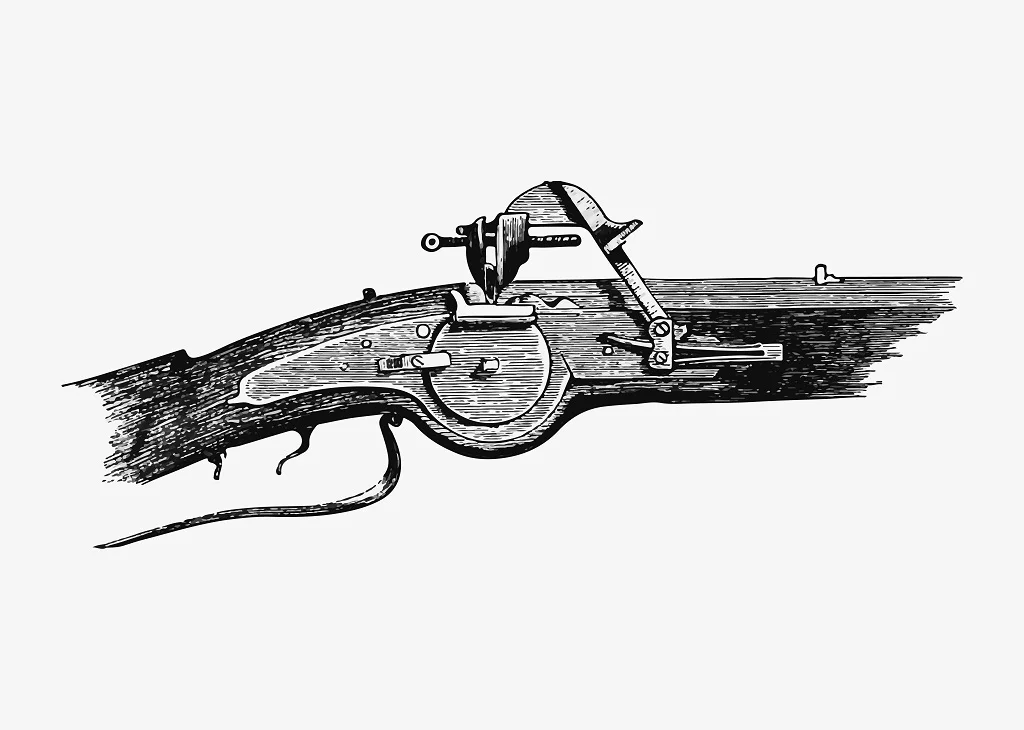
Wheel lock gun illustration vector
The trigger mechanism is a critical component of firearms, playing a crucial role in initiating the firing sequence. Understanding how the trigger mechanism works is essential for safe and accurate shooting. In this comprehensive guide, we will explore the intricacies of the gun trigger mechanism, from its components and functions to various types and features. Whether you’re a seasoned shooter or a beginner, this article will provide valuable insights into this vital aspect of firearms.
Table of Contents
The gun trigger mechanism is a complex system of components that enables the firearm to fire when the trigger is pulled. This will provide a general overview of the trigger mechanism and its importance in firearm operation.
The trigger mechanism consists of several key components, each serving a specific purpose in the firing process. This will discuss components such as the trigger, sear, hammer, firing pin, and safety mechanisms, highlighting their functions and interactions.
Understanding how the gun trigger mechanism works involves grasping the basic principles of trigger operation. This will explain the sequence of events that occur when the trigger is pulled, including the release of the sear, the striking of the firing pin, and the ignition of the primer.
There are two primary types of trigger actions: single-action and double-action. This will explore the differences between these trigger mechanisms, their advantages, and their applications in various types of firearms.
Trigger pull weight refers to the amount of force required to pull the trigger and initiate the firing sequence. The trigger reset is the distance the trigger must travel forward after firing to reset the mechanism for subsequent shots. This will discuss the significance of trigger pull weight and reset and their impact on shooting performance.
Single-stage triggers have a consistent pull weight and a direct and immediate release. This will explain the characteristics of single-stage triggers and their suitability for different shooting applications.
Two-stage triggers have a distinct take-up or slack in the first stage before reaching the break point where the shot is fired. This will discuss the advantages and applications of two-stage triggers, such as precision shooting and long-range accuracy.
Match grade triggers are designed for utmost precision and are commonly used in competitive shooting disciplines. This will delve into the features and benefits of match grade triggers, including their light and crisp pull.
Safety is paramount when it comes to firearms, and trigger mechanisms incorporate various safety features to prevent accidental discharges. This will explore safety mechanisms such as trigger safeties, striker blocks, and manual safeties.
Many shooters opt to modify their triggers to suit their preferences and improve performance. This will discuss common trigger modifications and the availability of aftermarket triggers, emphasizing the importance of seeking professional installation and understanding the legal implications.
The gun trigger mechanism is a fundamental aspect of firearm operation, influencing safety, accuracy, and overall shooting experience. By understanding its components, operation, and various types, shooters can make informed decisions and develop a deeper appreciation for this essential part of firearms. Remember, always prioritize safety and seek professional guidance when making trigger-related modifications or upgrades.
Gun owners regularly hear that maintaining their firearm is essential, but many still wonder exactly…
When handling any firearm whether it’s a hunting rifle, shotgun, handgun, or even a crossbow—reliability…
Jerking the trigger is one of the most common accuracy problems pistol shooters face. Whether…
Keeping your handgun clean is one of the most important responsibilities you have as a…
Archery has evolved dramatically over thousands of years, yet one debate continues to spark curiosity…
When you’re setting up a long-range rifle scope, one of the most important decisions you’ll…
This website uses cookies.